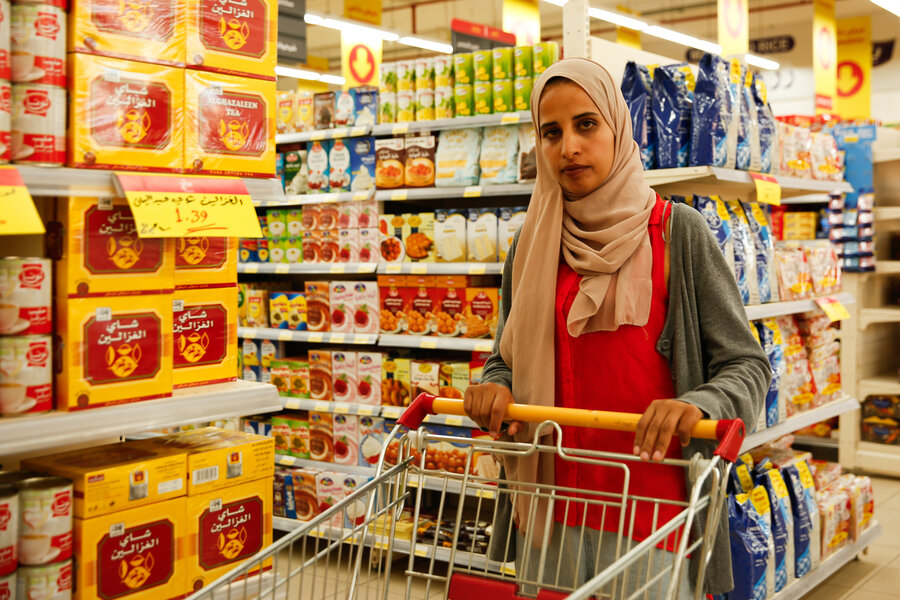
Each month in Jordan, Reham gives most of the money she receives from the World Food Programme (WFP) to her mother to buy food for the family. But she saves a small part of it to fund her dream of becoming a teacher.
Fleeing conflict in Ukraine, Sasha and Julia spend their WFP transfer on rent and food for their daughter.
These are just two stories of how cash is helping people through some of the most difficult moments of their lives and helping them build a future where they may no longer need humanitarian assistance.
Based on a decade of evidence, WFP's new cash policy defines the best way to put money in people's hands and lay the foundations for greater financial resilience and women's economic empowerment in the long term. Cash operations make up 35 percent of WFP's budget and the rise of digital technology and mobile money provides new opportunities for WFP to send money to people in hard-to-reach places.
In 2022, WFP distributed $3.3 billion to over 56 million people in 72 countries, a dramatic increase from 2009 where our cash operations were around $10 million. But the real power of cash goes beyond the dollar value sent to people.
Giving people the power to choose
Kisimba and her family fled conflict in the Democratic Republic of the Congo. By the time they returned, their home had been burned down and their crops destroyed. She was able to repair their home with some of the money she received from cash assistance.
"Between food and cash, I prefer cash because we lost everything. With cash we are better able to address our needs," said Kisimba.
Most of the money that WFP sends people is spent on food, but we recognize that people have other urgent needs such as rent or medical expenses. WFP trusts people to choose how to spend the money we send them, and we respect their decisions.
Eight months after receiving their first cash transfer, Kisimba's family were able to grow enough food to meet most of their needs. Kisimba eventually hired workers to help replant fields and was also able to invest in livestock.
Economically empowering women
One of the most exciting changes to cash, is how we are prioritizing women in our cash programming. There will be no end to world hunger without empowering women. It makes so muchfH sense to put more money in women's hands, because it can add trillions to the global economy. The Bill and Melinda Gates Foundation estimates that delivering humanitarian cash transfers directly to women could lift 100 million women out of poverty. When poverty decreases so does hunger - and this is WFP's main aim.
In drought-ravaged Somalia, Halima was able to save some of her mobile money transfer every month. She used these savings together with some credit to build a thriving retail business in the displaced camp where she lives with her family.
We want other women to follow Halima's journey and get access to their own accounts in their own names. This is the gateway to accessing other financial services, like credit and savings, which gives them the possibility to invest in a small business.
The vision laid out in the policy is that when WFP helps women gain their own accounts in their own names - they can also receive any kind of payment whether from the government or from family members abroad.






